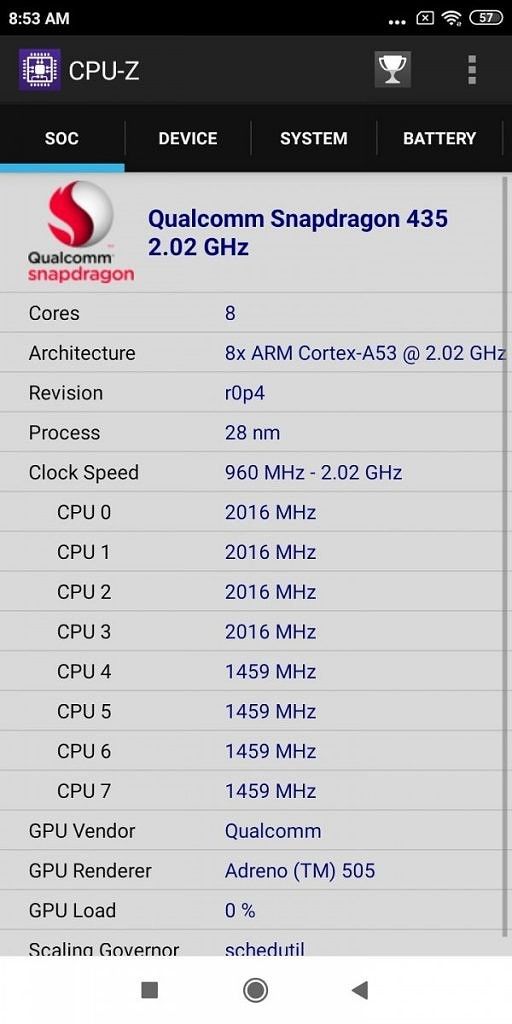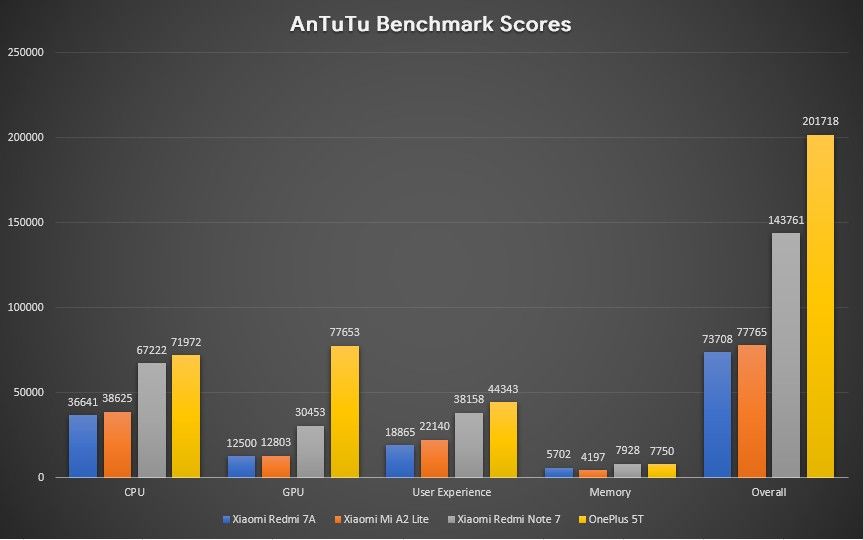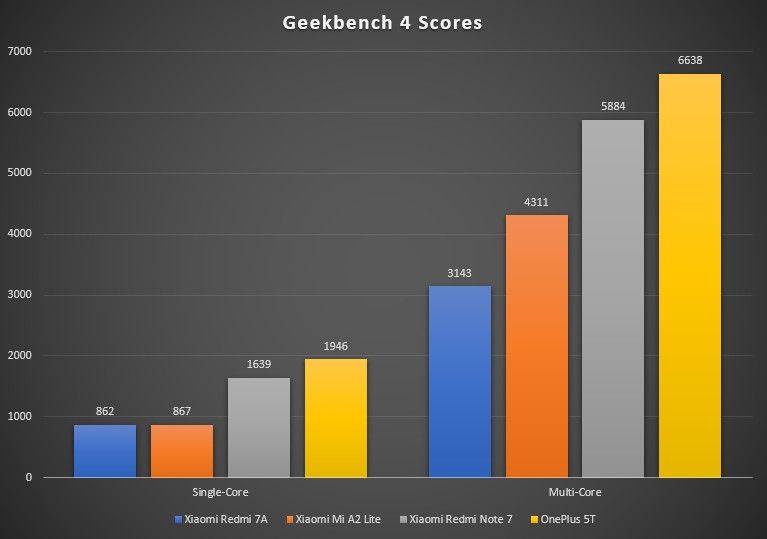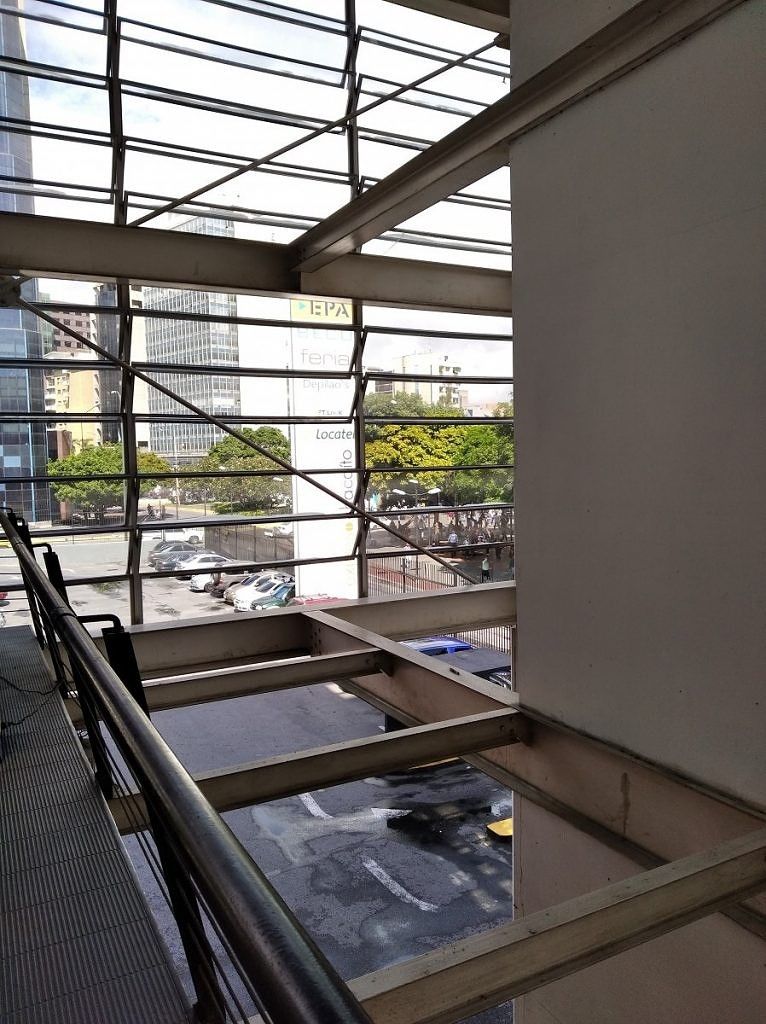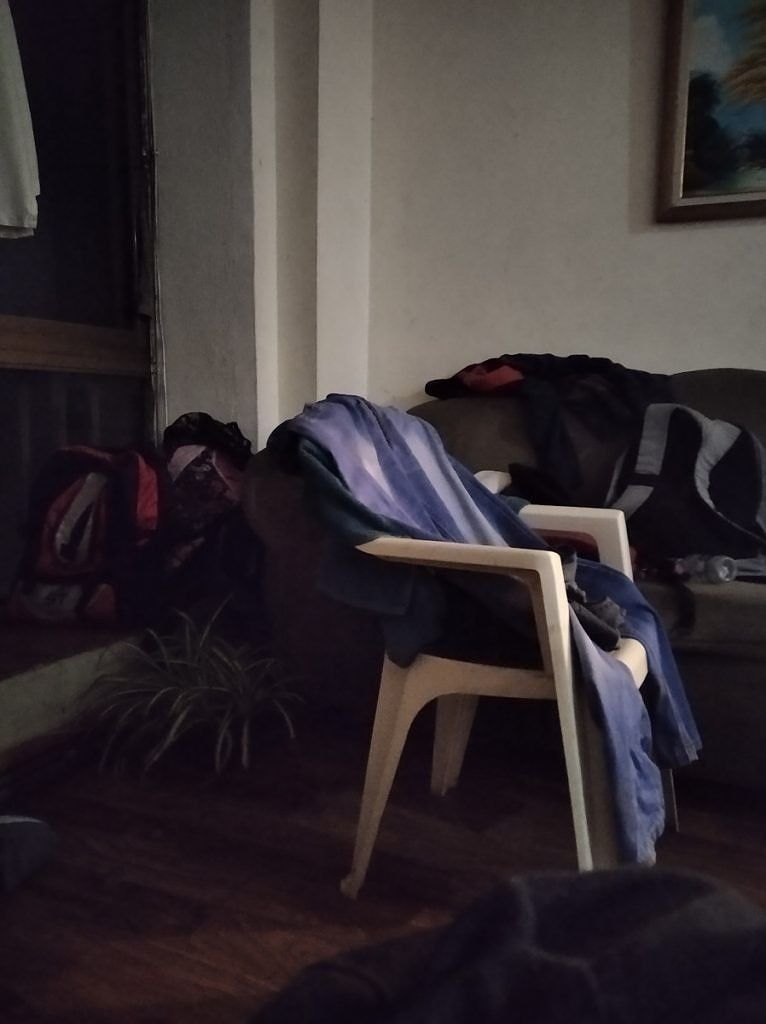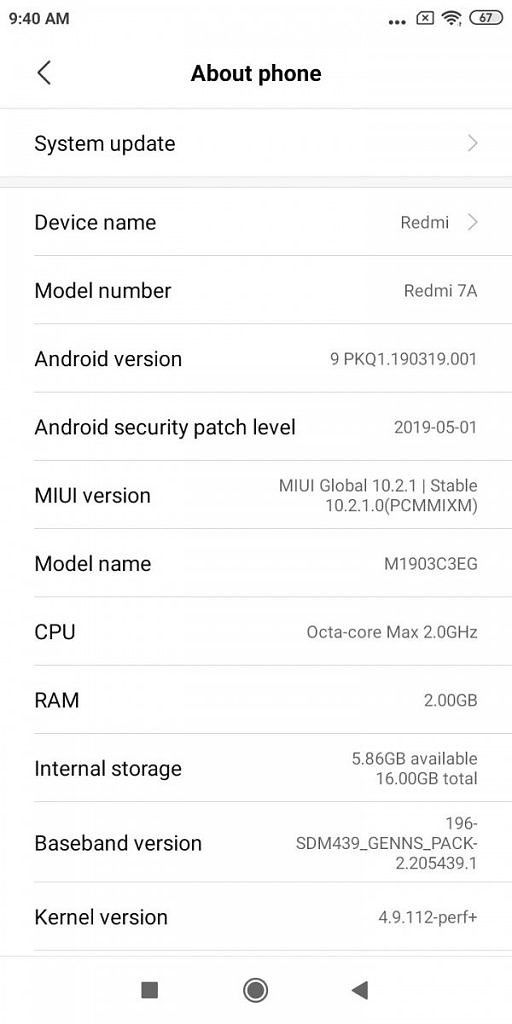Xiaomi is a company that I've grown to respect a lot in recent times. While they are a Chinese company in-and-out, they are currently taking the world by storm with their varied device lineup, which goes all the way from premium, bleeding-edge flagships to entry-level, budget smartphones. There's something for everyone out there, whether you're looking for bleeding-edge performance or just something that does the job and allows you to fly through your daily tasks, send messages and make calls. But if there is something that has managed to shine throughout all of their lineups is how affordable these devices are when compared to their competition. After all, selling affordable phones that deliver value for your money is how Xiaomi has managed to climb the ladder of success.
As of today, affordability remains one of Xiaomi's strongest suits. So much, in fact, that they're doubling down on it. Earlier this year, Xiaomi spun off Redmi as a sub-brand of its own, in order to up their game in the affordable smartphone segment. And yes, they have sure delivered since then. With phones like the Redmi K20/K20 Pro "flagship killers", to aggressively priced mid-range devices like the Redmi Note 7 and Redmi Note 7 Pro, and going all the way down to the Redmi Go, Xiaomi is currently shipping out millions of affordable, quality devices under their Redmi sub-brand.
One of them is the Redmi A-series, and its most recent entry, the Redmi 7A, was recently launched in the global market and, more recently, in India, where it's sold for an outstandingly low ₹5,799 ($85) for the 16GB version and going up to ₹5,999 ($88) for the higher-end 32GB model. The device is trying to seize the entry-level smartphone marketplace, and indeed, it looks amazing on paper and appears to be a true bargain for the money. But exactly how well does the new budget member of the Redmi family fare in real-life usage? I've been using the Xiaomi Redmi 7A for the past few days, and today, I'm laying out my experiences with it.
Redmi 7A: Specifications
|
Specifications |
Redmi 7A |
|---|---|
|
Software |
MIUI 10 based on Android 9 Pie |
|
Display |
5.45-inch HD+ (1440×720), 18:9 aspect ratio |
|
System-on-chip |
Qualcomm Snapdragon 43912nm process, 8x Cortex-A53 @ 2.02 GHz |
|
RAM and storage |
2GB/16GB, 2GB/32GB, 3GB/32GB (only in some markets)microSD card slot with up to 256GB expandable storage |
|
Battery & Charging |
4,000 mAh with 10W charging |
|
Rear cameras |
12MP Sony IMX486CMOS sensor, ƒ/2.2 aperture, 1.25μm pixel size, 1/2.9″ sensor size, PDAF |
|
Front camera |
5MP with AI beauty mode |
|
Security |
AI face unlock |
|
Ports |
micro-USB portDual nano-SIM slot with dedicated SD card slot3.5mm headphone jack |
|
Connectivity |
Dual 4G VoLTEWi-Fi 802.11 b/g/nBluetooth 5.0 |
|
Colors |
Black, Blue, Golden |
|
Pricing |
2GB/16GB: ₹5,799/$852GB/32GB: ₹5,999/$88 |
|
Availability |
Available now! |
Design and Build
The Xiaomi Redmi Note 7 signified a big change of direction, design-wise, for Xiaomi as the company opted to separate Redmi devices from other Xiaomi smartphones under their own branding and identity. Gone was the metal-clad design of its predecessor, and the company opted for a mix of plastic and glass instead. For the Redmi 7, though, this was an even bigger change, as the phone looks more like a lower-end version of the Redmi Note 7 instead of a successor to the smaller Redmi 6, cutting on other aspects like build quality (glossy plastic instead of actual glass) and screen resolution (720p instead of 1080p). The Xiaomi Redmi 7A, though, does not go through such a considerable design change. While it does take certain design cues from these phones, it retains the same form factor as the Redmi 6A, and the overall design differs a lot from its elder brothers.
Don't get it wrong: the Redmi 7A's frame and back are plastic all the way around. Unlike the Redmi 7, which used glossy plastic on the back to replicate the looks of a glass-backed smartphone, the Redmi 7A goes for a simpler matte plastic unibody. I have the matte black version, and I got to say that it looks pretty slick, plastic or not. It also feels really sturdy and well-built, and this time, I really mean it -- back when I got my hands on the Redmi Go, the company's most affordable device currently available, I also praised its build quality for such a cheap device. But when compared to the Redmi 7A, the Redmi Go feels like a toy.
As I said before, the Redmi 7A takes a couple of modern design cues from the Redmi 7 and the Redmi Note 7. In my opinion, this makes it look a lot less stale than its predecessor, the Redmi 6A. It doesn't try to grab anyone's attention with its looks. Having a matte plastic unibody, there aren't any "Aurora Glass" effects going on with my unit or gradients of any kind, and there aren't any over-the-top design features either. If you opt for the "Gem Blue" or "Gem Red" color options, which are available in certain markets only, the matte unibody is swapped for a glossy plastic finish that does have some gradient, in a similar fashion to the Redmi 7, and looks a lot more compelling and eye-catching, but in my aptly named "Matte Black" review unit, there is none of that. Simple gets the job done with the Redmi 7A, and the understated look manages to remain sleek and professional.
The 12MP single rear camera and the LED flash are contained within the same module, and in a similar fashion to the Redmi 7/Note 7, it's vertically aligned. It also barely protrudes from the back. There is a Redmi logo on the bottom left corner, as well as some certifications in the bottom right corner. The phone itself feels kind of hefty when compared to other devices with the same form factor---it has to since it's housing a massive 4,000 mAh battery in a smaller body.
The phone does not feature a notch either, and there aren't any bezel-less screen implementations or unrealistic screen-to-body ratios. Instead, the front is dominated by a 5.45-inch IPS LCD display with a 1440 x 720 resolution and an 18:9 aspect ratio. Bezels are there, yes, but they're decently thin, all things considered. The display also has decent enough viewing angles and colors as good as you'd expect from an LCD panel, but again, the screen is pretty modest, and probably not noteworthy enough to deserve a section of its own.
What we do have in the front, though, is branding: the Redmi logo is present in the bottom bezel as well. I'm part of the crowd that thinks branding on the front is pointless and unnecessary, especially during the current race towards the perfect screen-to-body ratio. The Redmi Go, which had bigger bezels, did not have any branding on the front, and neither did its predecessor. In this case, though, it is pretty discreet and non-distractive. There is a notification LED, a front camera, an earpiece and some sensors in the top bezel.
The top of the device has a headphone jack and a microphone hole, but alas, we have no IR blaster here. It's an odd omission, given how both the Redmi Note 7 and the Redmi 7 do have one, but its predecessor, the Redmi 6A, did not. Going even further back, though, we find that the Redmi 5A (which we also reviewed) did, in fact, have one. So take that as you will. The bottom of the device houses the micro USB charging port (USB-C finally arrived in the Redmi brand with the Redmi Note 7, but we're still talking about an entry-level phone) as well as two speaker grilles by the bottom (no dual speakers here though, as there's only one bottom-firing speaker to the right of the micro USB charging port).
The left of the device has a dual SIM plus microSD card slot. It is not hybrid, though: the phone gives users the option to use two nano-SIM cards and a microSD card at the same time, which is something very much appreciated, and much more so in this price range. The right side of the device has the classic volume rocker as well as the power button. The buttons themselves feel pretty solid and clicky, which serves as a testament to the device's durability.
The phone doesn't have a fingerprint scanner or any kind of biometric authentication. At this price range, you'd be very hard-pressed on finding a phone that has one, but the Redmi 7, its bigger brother, does. We are well into 2019 now, and device manufacturers are even moving towards in-display fingerprint scanners. So while I get that the fingerprint scanner was omitted to reduce costs, adding a basic rear-mounted fingerprint scanner would have added a lot of value to the device and utility for the customer.
For what it's worth, the Redmi 7A's polycarbonate unibody feels pretty good in the hand, despite not having any premium glass or metal elements. And while yes, this was done to keep costs low, Xiaomi did go the extra mile to ensure the phone doesn't feel flimsy and cheap, which is something I very much appreciate.
Redmi 7A: Performance
The Xiaomi Redmi 7A is powered by the Qualcomm Snapdragon 439 system-on-chip. Being a Snapdragon 400 series chipset, it isn't really anything to write home about. It is manufactured on a 12nm FinFET process and it features an octa-core setup comprising of Cortex-A53 cores clocked at 2.0 GHz, in a fashion identical to the Snapdragon 625 and ahead of other Snapdragon 400 series chipsets. It also features the Adreno 505 GPU, just a step below the 625's Adreno 506. My unit has 2GB of RAM and 16GB of storage, but the higher-end model, which costs barely ₹200 more, features 3GB of RAM and 32GB of storage.
One interesting thing I should note is that CPU-Z reports the device as having a Qualcomm Snapdragon 435 instead of a Snapdragon 439. The Snapdragon 439 is "software-compatible" with the Snapdragon 435, but we're talking about similar, yet completely different chipsets built on entirely different processes (28nm vs 12nm), so there's no space for confusion here. I'm inclined to believe it's just an issue with CPU-Z not supporting this chipset yet since AnTuTu does report the device as having a Snapdragon 439.
I pitted the Redmi 7A against other, more powerful devices in my household, including the Redmi Note 7 (Snapdragon 660), the Xiaomi Mi A2 Lite (Snapdragon 625), and my own daily driver, the OnePlus 5T (Snapdragon 835). And I was actually fairly surprised. The phone got an overall 73,708 score in AnTuTu Benchmark, which trails just ever so slightly behind the Mi A2 Lite's 77,765 score. It does fall short of the Redmi Note 7's 143,761 score and the OnePlus 5T's 201,718 score though. But the device still provides a decent punch getting roughly half of what the Redmi Note 7 manages to score, and it's pretty impressive, especially considering its price tag and the fact that it's powered by a Qualcomm Snapdragon 400-series SoC.
Geekbench 4 gives us similar results. The Redmi 7A gets a single-core score of 862 and a multi-core score of 3143, trailing closely behind the Xiaomi Mi A2 Lite's scores of 867 and 4311, respectively. While I didn't go that deep into performance and benchmark testing, it's safe to say that the Snapdragon 439 included in the Redmi 7A's guts performs pretty similarly to the Snapdragon 625 used in a sleuth of Xiaomi devices, with the Snapdragon 625 having a very slight edge in certain aspects.
I didn't get too deep into gaming with this phone since my review unit was the 16GB model and didn't allow me to have a lot of games on it, but I did get to play some games like PUBG Mobile, Minecraft, and Grand Theft Auto: San Andreas, and they ran on the Redmi 7A without a hitch. Now, while this isn't that high of a bar to surpass, it's really nice given that we're talking about an entry-level chipset in a sub-$90 smartphone. If you are looking for more gaming performance, you would need to expand your budget to accomodate more powerful hardware.
The Redmi 7A should, overall, perform pretty decently for most of your daily tasks. "Should" is the keyword here and brings me to my main complaint with the device: the software. With the Xiaomi Redmi Go, the only device in Xiaomi's 2019 device lineup that is cheaper than the Redmi 7A, the company opted for a lightweight stock Android software experience to keep things as smooth as possible instead of trying to cram their MIUI skin onto the humble device (yes, it's an Android Go phone, but as Samsung has demonstrated, you can indeed skin Android Go). After using the Redmi 7A, I realize how wise that decision was.
MIUI is back in full force here, and while it has never really been my cup of tea, it has actually become so bloated that it holds back the device in certain ways. The phone's actual, real-world performance is very, very inconsistent. Back when fellow XDA writer Idrees Patel reviewed the Xiaomi Redmi Note 7 Pro, he complained about the way the device, despite being a decent performer, suffered from frequent issues with stuttering and janky animations, which made the overall UI experience less than perfect. And this is even more true with the Redmi 7A, which features a weaker CPU and less RAM.
Xiaomi did a pretty good job with keeping bloatware to a minimum, with the only extra pre-installed apps being Facebook and WPS Office, but while the phone will fly through most daily tasks, sometimes it'll stutter or even hang while browsing the web, checking out social media, or doing other basic things. It even froze on me once after pulling down the notification shade while checking out my Instagram stories, requiring me to force a reboot.
I'll talk more in-depth about the phone's software later during the review. But MIUI is an unnecessarily heavy skin, and while certain devices in Xiaomi's lineup are able to handle it without much effect on the overall user experience, it has lots of stuff going on with it and it can start taking a toll on some entry-level phones.
Of course, it all depends on your own usage, and if you're paying under $100 for a smartphone, you're probably not looking for exemplary speeds. But I seriously think this phone would benefit a lot from stock Android, and therefore, custom ROMs. So if you do come across with unbearable lag, maybe that would be an option to consider. I really hope Xiaomi works towards debloating their software with their upcoming MIUI 11.
Camera
The Redmi 7A's global model features a 12MP IMX486 single rear camera sensor, which is the same camera sensor found on the Xiaomi Mi A2 and the Indian Redmi Note 7. It is a CMOS sensor with a ƒ/2.2 aperture, 1.25μm pixel size, a sensor size of 1/2.9″ and support for PDAF (Phase Detection Autofocus). All factors considered, it is a pretty capable shooter for such an entry-level, budget smartphone, and it actually translates to decent pictures in some situations. Now, I should mention that this is an $85 smartphone (again) and thus, if you're looking for stellar camera performance, you should be spending several hundred dollars more for a Huawei P30 Pro or another award-winning smartphone. That being said, the Redmi 7A's camera does not disappoint... for its price range, of course.
The feature set on the Redmi 7 is simple and straightforward as there aren't any additional cameras on the back for added functionalities. Opening up the MIUI camera, we find ourselves with options for photos, video recording, short video (up to 15 seconds) recording as well as a pro mode, something which Xiaomi includes in the entirety of its smartphone lineup. There is no portrait mode for the rear camera, which seemed interesting to me given how MIUI 10 is supposed to have, at least, an AI-based portrait mode on every phone it supports, but the front-facing camera does have an AI-powered portrait mode. I should also note that you can't use a Google Camera port on this phone since it is using 32-bit (ARM) software instead of 64-bit (ARM64), so the camera experience you get here is what you'll be stuck with.
Xiaomi Redmi 7A camera samples.
As for the actual picture quality, the 12MP rear sensor does provide decent enough quality for most use cases you may think about. In some cases, I was even impressed by the amount of detail captured. Nothing award-winning, of course, but definitely workable. Pictures in broad daylight come out with a decent amount of detail and decent exposure most of the time. Colors can come off kind of dull sometimes, but most of the time, they are pretty accurate as well.
The camera does have a certain tendency to overexpose sometimes, as evidenced in pictures like this one, but nothing really unbearable and, if it doesn't get adjusted automatically, you can resort to the phone's pro mode to adjust things by yourself.
In lower-than-daylight scenes, particularly in indoor scenarios, we start to see Xiaomi's noise reduction algorithms take away details from pictures. The camera's tendency to overexpose also translates to light bulbs and other light sources in indoor shots frequently looking exceedingly bright. Certain artifacts, like lens flares, also tend to show up sometimes. However, pictures by this stage are also decent and usable.
When it comes to low-light pictures, the Redmi 7A delivers less than stellar performance. Here's when Xiaomi's noise reduction starts turning images into a muddy mess. Noise reduction starts taking away details even at close distances. But since we are talking about a very cheap phone here, we shouldn't hold it to a gold standard. After all, the device's focus isn't the camera, nor is the camera one of the main selling points. The device does not support Xiaomi's Night Scene feature either, which would have helped in scenarios like these.
The front-facing camera is a simple 5MP sensor, which is pretty average in quality and will allow you to snap decent selfies and capture your memories with relative ease. Colors look as accurate as they go, and details are retained decently. Exposure works fine as well. The front-facing camera we get here is not amazing, but it will get the job done most of the time. Again, we do need to keep our expectations grounded for a sub-$100 device, and keeping that in mind, the Redmi 7A does its job well.
Selfies taken with the Redmi 7A. The third image showcases the phone's AI-based front-facing portrait mode.
As I said before, the front-facing sensor, unlike the rear camera, does have portrait mode. It's AI-based since we only have one sensor, so it isn't perfect with its edge detection, but it's a nice feature to have. We also have Xiaomi's beautification feature which is cranked up to 3 by default. It's not overly cartoonish like EMUI's implementation, which means you may not immediately notice it, but you should remember to turn that off if you want to get accurate selfies.
Overall, the camera seems decent enough if you are not looking for amazing shots every time, but it starts showing noticeable issues with trickier lighting situations. It's very much an average budget phone camera. This isn't necessarily bad, and especially not for such a cheap device. But given how Xiaomi is touting the phone's 12MP IMX486 sensor as one of the phone's headlining upgrades, I'm not really seeing the improvements the upgraded sensor should bring, and shots taken with the device don't look noteworthy enough to me for the camera to deserve marketing effort. Users may be misled into thinking the phone actually performs well in the camera department, or at least comparable to more expensive devices when in reality, it's no better than other budget phones. This is not to say it's bad, though. It's just a budget phone camera, with budget phone deficiencies.
Battery
I feel like it's worth mentioning that I didn't get to use the device as my daily driver since the phone wouldn't work with my carrier (Movistar). Because of this reason, I've been carrying both the Redmi 7A and my daily driver (OnePlus 5T) around everywhere I went in order to try to get close-to-daily driver usage. Unfortunately, though, the battery was not one of the aspects I managed to explore in-depth. My limited experiences with the phone's battery, though, are very, very promising, and noteworthy enough to still run this section.
The Redmi 7A features a 4,000 mAh battery. That, by itself, might not blow you off your seat given how bigger batteries are increasingly becoming more common across all smartphone ranges. But the device's big battery is further complemented by factors such as its 12nm Snapdragon 439 processor and its 720p LCD display. All of these factors are combined to make this phone, at least on paper, a boon for battery life. And in real-life usage, it's just as promising.
As an experiment, I tried to see how long it could go in a single charge, and I got to 4 days and 16 hours of idle time and 6 hours of screen-on time, bringing the grand total to almost 5 days in a single charge with semi-frequent usage (taking pictures, shooting video, testing apps, etc). Of course, everyone's usage is different, and you may not get the same mileage I'm getting. But in my opinion, this phone is a serious contender for the new king of battery life, not only in the entry-level range but in other categories as well. It is really, really good, and it has a lot of potential I want to explore more in-depth later on.
Software and User Interface
Software is my main complaint with the device since MIUI is a really bloated skin and might eat into the performance of the device, but once you get past the whole performance aspect, it is a radically different experience if you're used to stock-ish Android builds, like I am. MIUI invites polarizing opinions -- you either love it, or you outright hate it. The Redmi 7A is powered by Android Pie with Xiaomi's MIUI 10.2.1 skin on top and the May 2019 security patches. From the way notifications behave, to the recents menu and the way the system behaves and interacts with other apps, in my opinion, it can come off as an entirely different operating system for some people. MIUI is consistent across Xiaomi devices for the most part; so if you are migrating from an earlier Xiaomi device, this will be familiar territory.
Credit where credit is due: MIUI does have several things going for it. Features like a native, system-wide dark mode and Wi-Fi sharing, which are debuting in AOSP with Android Q, have existed in MIUI for some time now. And the Redmi 7A isn't missing any MIUI features here: you get the whole package, for better or for worse. Unfortunately, and as I said before, that also means that you also get all of MIUI's bloatware and app suite. They have done a good job of keeping it to a minimum for storage sake, but it's still there, and so are ads, unfortunately.
One of the most annoying things I've found on MIUI is their app scanner, which claims to scan every app you install on your device, in the same fashion as Google Play Protect. Except that, instead of doing it silently, you get a full-screen pop-up which makes a largely pointless feature get even more annoying and in-your-face and, yes, gives MIUI an opportunity to display an ad. Ads are present and prominent throughout MIUI, and the only way to get rid of them completely is by installing a custom ROM: either de-bloated MIUI builds like the ones provided by Xiaomi.eu (which are not available yet for the Redmi 7A) or AOSP custom ROMs (there ins't any dedicated development for the phone yet given how new it is, but you can go ahead and install a GSI just alright).
I really hope Xiaomi makes strides towards improving this with MIUI 11 because, as of right now, MIUI 10 comes off as a truly bloated and convoluted system. I am an Android purist myself, and so other people will be liking it better than I do. And yes, MIUI does have potential and positive aspects to go with, but bloatware and ads might spoil the whole experience for some. It's pretty much the reason why I normally go ahead and flash custom ROMs on every Xiaomi device I own as soon as I can get the bootloader unlocked.
Conclusion: Xiaomi nails the entry-level game again with the Redmi 7A
Current trends for 2019 indicate that phones will keep getting more and more expensive: nowadays, flagships can cost you over $1,000. People buy these phones for many different reasons, one of them being that cheaper phones are often perceived as inferior. The Redmi 7A is proof that cheap phones can be good too.
Let's make things clear here: this phone isn't going to win any awards in performance, camera, or pretty much any aspect. And no, this also doesn't get anywhere near a flagship in terms of features, performance, or anything else. It doesn't have the bells and whistles a flagship smartphone has. But with that being said, it's good enough for handling all of your basic tasks in a breeze, and maybe a bit more. It's good enough to not make you feel disappointed in buying an $85 smartphone. It's even good enough for running casual games. It's a low-end device that performs like a mid-range phone, which is, by itself, another impressive feat from Xiaomi in the entry-level marketplace. It's not stellar, but it's good enough for many smartphone users. The Redmi 7A continues along Xiaomi's aggressive pricing strategy and shows us that you don't need to spend a lot of money if your smartphone usage is basic in nature.
Yes, the Redmi 7A does have its own limitations and compromises. It has a 720p display, 2GB of RAM, and limited internal storage (although we do have a microSD card slot to help mitigate the latter). But with a 12nm SoC that performs like a Snapdragon 625, a 4,000 mAh battery and a functional camera, the Redmi 7A is easily the best smartphone you can get right now under $100. My only complaints so far would be the software and the fact that it doesn't support a lot of bands, which didn't allow me to use the device as my daily driver.
You'll be able to purchase the Redmi 7A in India starting July 23rd through online marketplaces like Flipkart and Mi.com in Matte Black, Matte Blue, and Matte Gold color options, starting at ₹5,799/$85 for the 16GB model and going up to ₹5,999/$88 for the 32GB model. It's also set to release in Europe very soon.


